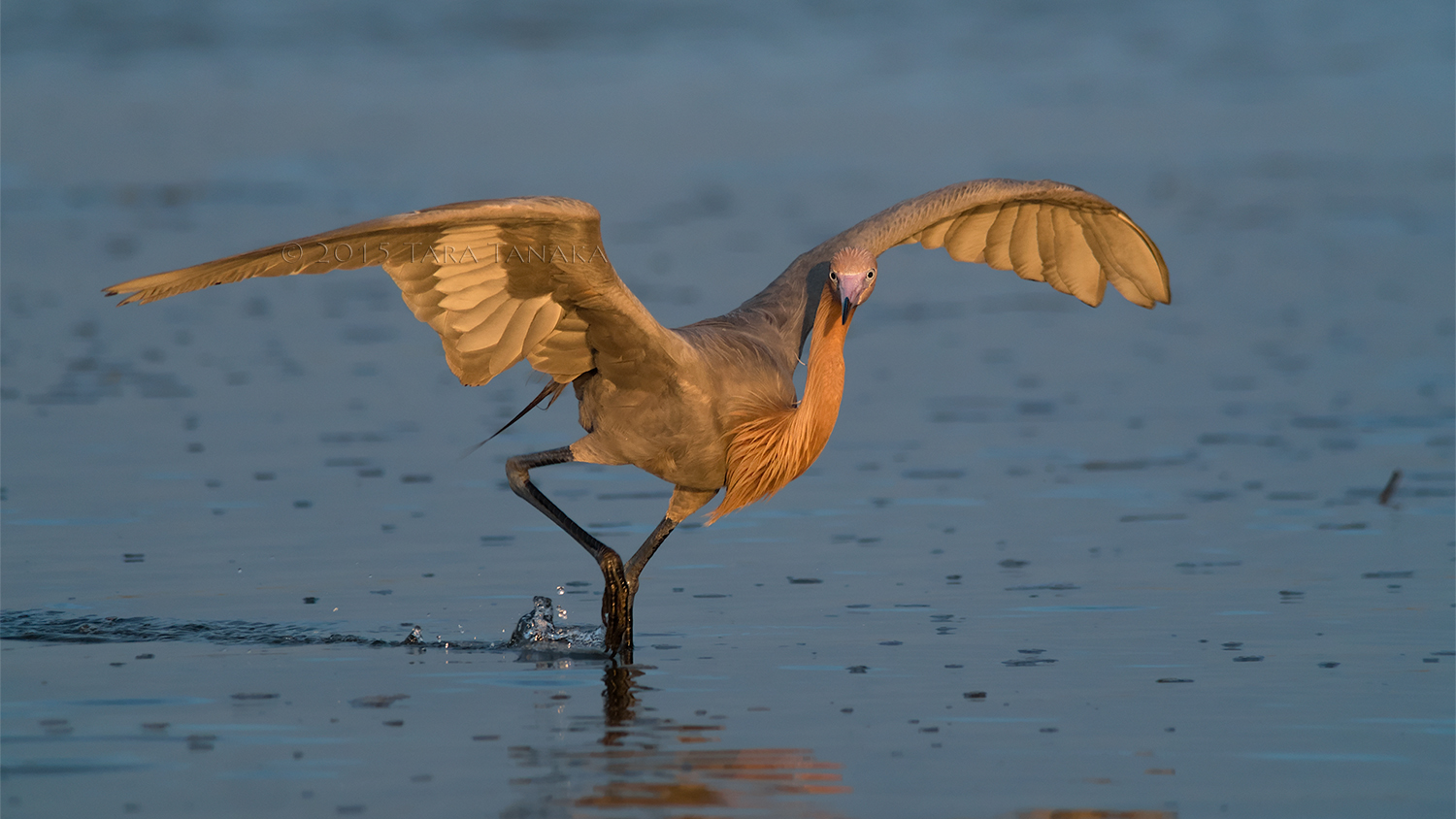Welcome to our series of 100 interviews we will be holding with photographers who use mirrorless cameras for their work! “Switching to a smaller and lighter system” has become somewhat of a buzz phrase as of late, but many working photographers take this philosophy seriously. From medical reasons such as resolving back and shoulder pain to the simple realisation that bigger does not mean better, photographers are turning to mirrorless systems now more than ever before.
This week’s interview is with Tara Tanaka, an award-winning digiscoper who uses the Panasonic Lumix GH4 and a Swarovski Optik scope for her bird and wildlife photography. She was recently interviewed by Rob Knight on the popular podcast This Week in Photo about her work, and is one of the jury members for the Movement and Action category for this year’s Digiscoper of the Year photography competition.
Visit Tara’s Vimeo channel and follow her on Flickr.
All images in this article are property of Tara Tanaka and are published with permission.
Who is ‘Tara Tanaka’ in three simple sentences?
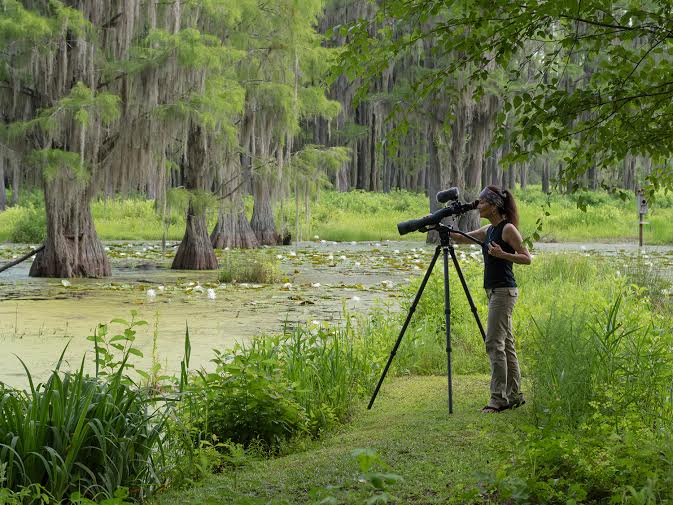
- A digiscoper who is 1,000 times happier in her blind than in a five-star resort
- Was lucky enough to marry her best friend and work with him to create their own wildlife sanctuary
- Hopes that by connecting people with birds through photos and video that they will be moved to protect them
You are a wildlife photographer, birder and digiscoper based in Florida. What drew you to this genre in the first place?
My husband and I have lived on a 45-acre cypress swamp since 1993, and some of the most beautiful species of birds live and nest here, including Wood Ducks and Great Egrets.
In 2009 I decided that I would expand my very limited knowledge of photography in order to capture the beauty and incredible behaviors I was seeing every time I walked past a window. A couple of years before a friend had brought over digiscoping gear to record an unusual bird species, and when I saw the small camera mounted on a spotting scope, I was immediately impressed by the elegant simplicity of the system.
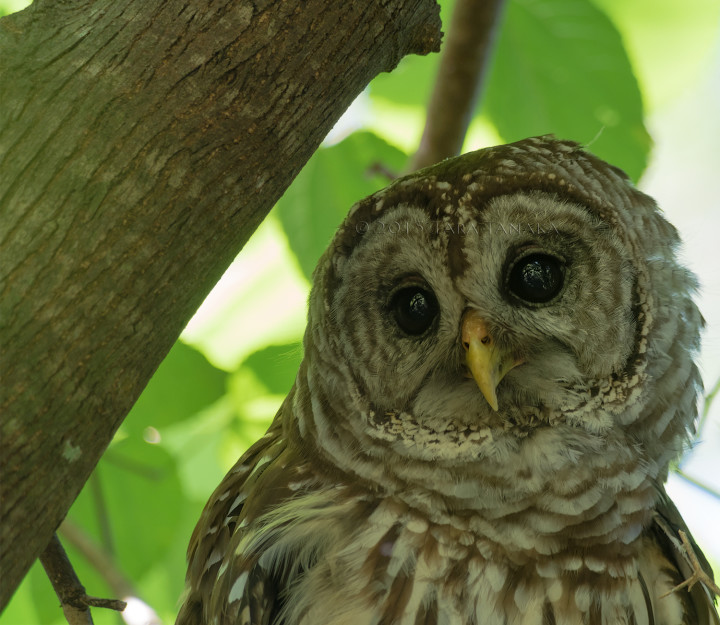
How important is it to know the habits and behaviors of your subject to be a successful wildlife photographer?
I think it is very important, and I’m very fortunate that most of my subjects are right out the window, allowing me to observe them on a daily basis. If I’m traveling I don’t usually do extensive research ahead of time, but rather try to plan to have at least a few days to get to know a species, or sometimes an individual bird’s behavior.
Observing birds through my camera and scope at 1000mm or more I am able to see behaviors, glances and even the expansion and contraction of a bird’s pupils when it sees prey or feels fear. Being sensitive to and in tune with how you are affecting your subject and his behavior is also very important. Being still and quiet and becoming just another part of your subject’s environment — not something scary or threatening — is not only much better for the birds, but will result in opportunities for intimate portraits of birds that would never be possible otherwise.
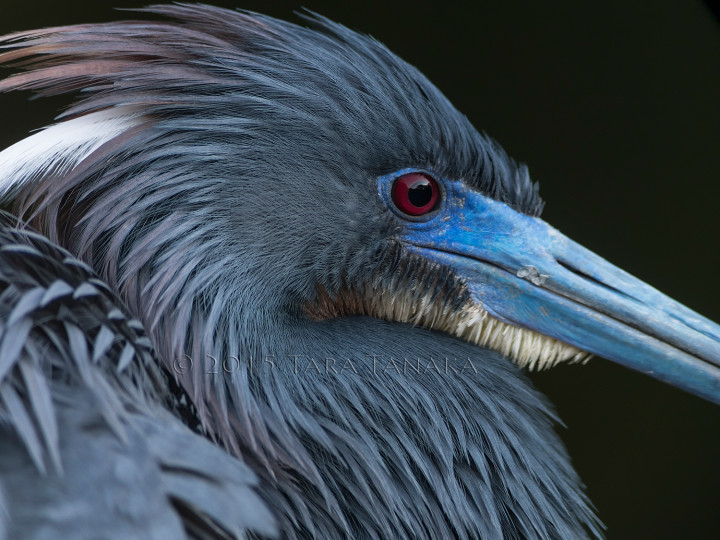
Is there a specific species of bird you enjoy photographing the most?
I love photographing the larger species, and Reddish Egrets are my favorites. They spin, dance and run – tossing their lion mane-like feathers. It’s an absolutely mesmerizing experience to have your eye pressed up against your viewfinder — with the rest of the world blocked from view — following a world-class avian dance performance with 1000mm.
Below you can find a video of a Reddish Egret feeding shot by Tara in 96fps and 4K:
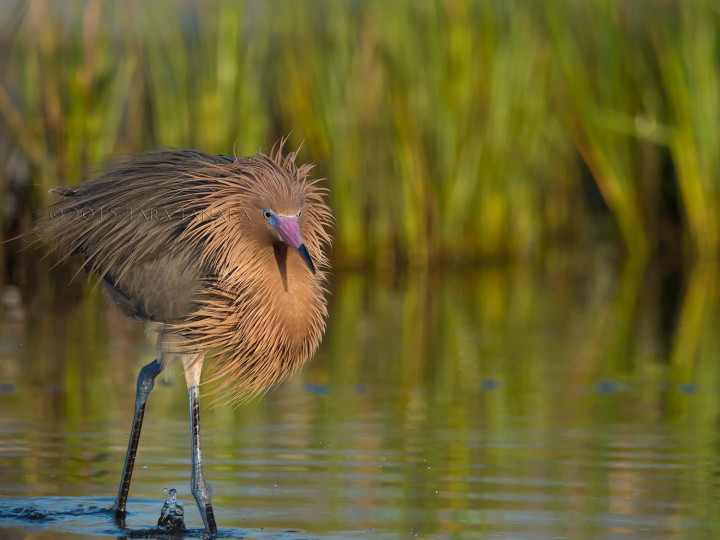
You use the Lumix GH4 and Swarovski Optik scopes (STX 85 and 95). Why did you choose these tools for your photography?
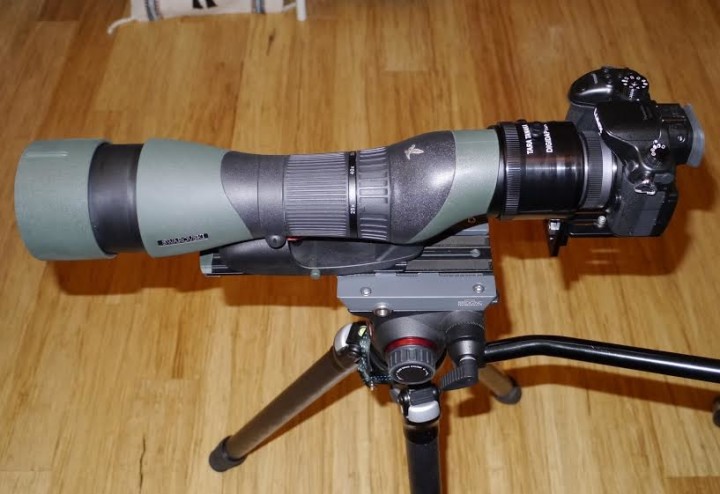
I set my initial budget for my first extreme-telephoto digiscoping system at a naively modest $1000, but ended up spending $1400 once I’d bought my tripod and adapters. It was a $600 Nikon scope with a Nikon P5100, aluminum tripod legs and a $100 pan and tilt head. No raw, no EVF, no remote shutter.
I worked really hard at learning a set of virtually undocumented skills, figuring it out as I went. Within a few months I realized that the optics of my system were not capable of capturing the quality that I thought was possible with digiscoping, and by then I knew I wanted to shoot in raw. I upgraded my scope to a Kowa with high quality glass and bought my first micro four-thirds camera, a Lumix G1. It had raw, burst mode, an EVF, an electronic remote and the all-important magnifier feature that I needed to fine-tune my chosen method of manually focusing the scope. I’ve used the Lumix G cameras most days over the last six years, including the G1, GH1, GX1, GH3 and now the GH4. I’ve tried a couple of other cameras for digiscoping, but the GH4 is my dream digiscoping camera.
In 2012 I won the Swarovski STX 95 scope in their international Digiscoper of the Year contest, and just can’t say enough good things about the optics of this scope. Because the lowest power on the eyepiece of this scope is 30x, the shortest focal length I can get with the GH4 + 20mm/1.7 lens on the STX 95 is 1200mm, which can be too much, especially for larger subjects. I sold my Kowa and another Swarovski I had won and bought an STX 85 whose eyepiece starts at 25x, so that I could have the option of shooting with a “modest” 1000mm.
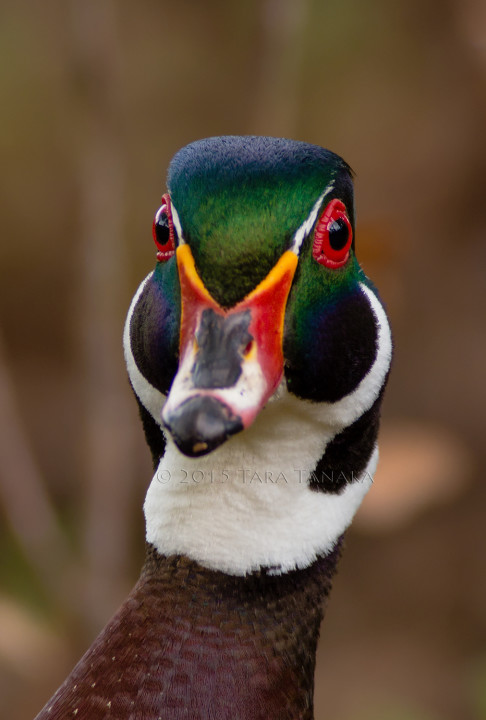
Are there any particular features on the GH4 that you find useful for your work as a wildlife photographer? If so, which ones and why?
Digiscoping allows the photographer and/or videographer to capture incredible details with a relatively light-weight system, costing considerably less than expensive long lens shooting.
Because of the extreme focal lengths involved, any movement can result in blurry images, so mirrorless designs are perfect for this niche method. I don’t ever use flash on birds, but yesterday I took a photo of a Barred Owl using an ISO of 200 and a shutter speed of 1/13 second under a dark canopy using a tripod and electronic remote.
The GH4 had just been released the week before, and I was leaving for a week-long trip that included a few days with my favorite Reddish Egret. I didn’t know much about 4K video or that the camera had 96fps capability, and although I knew it had focus peaking, I thought it might get in the way. I knew it had 12 fps burst capability and better ISO handling than my GH3, and that the terrible EVF of the GH3 had been completely redesigned, so I decided to upgrade for those reasons alone. The night before we left on our trip I found a YouTube video discussing its 96 fps capability. I shot a few slow motion clips on the beach my first day, and almost fell over when I saw the quality. Then I tried 4K – I was hooked! I’d only shot video on occasion before I got the GH4 – when there was some behavior that was better captured with video – but I’ve spent a lot more time shooting video than photos since I got the GH4.
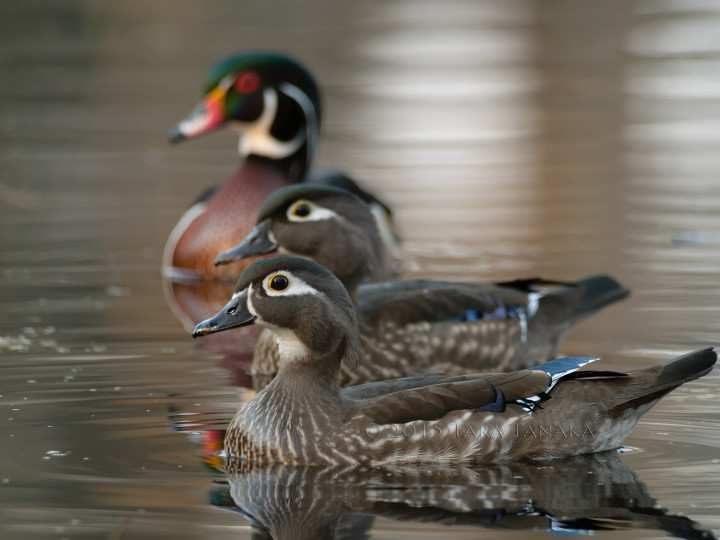
Because I’d always taken photos by manually focusing the scope it was a relatively seamless transition to pulling focus on moving birds – however it requires continuous rather than intermittent accurate focusing – which is aided tremendously by the focus peaking feature of the GH4. Even for stills, the focus peaking has turned out to be invaluable for keeping moving birds in focus, although if I find myself photographing a perched bird, I turn it off via a custom-programmed function button and go back to the magnifier feature for fine-tuning focus.
Zebras, available in both photo and video mode, are great for real-time feedback for preventing blown highlights, and weather sealing in Florida’s humidity is invaluable. The EVF is excellent as is the resolution of the LCD screen. I usually use a loupe on the LCD to better block ambient light and for a larger view for focusing. The ISO handling is a bit better, and 12 fps can make a big difference when a Wood Duck stands up and flaps its wings. Although I’d always rather capture photos in raw, extracting stills from 4K video or in 4K Photo mode gives you 30 fps to choose from in the form of 8MP JPEGs. I was using 4K Photo mode to video a pair of Desert Cottontails playing, and when I extracted the individual frames I discovered that I’d captured three photos where they were touching noses in mid-air — it’s unlikely I would have gotten all of those at 12 fps.
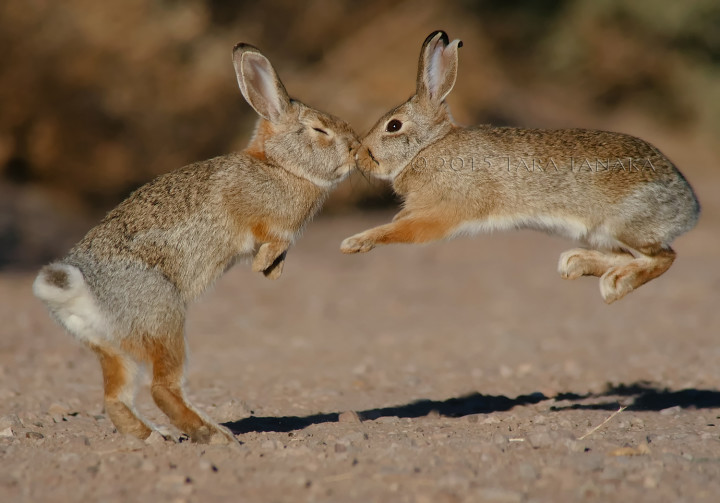
What are your typical settings for wildlife photography in broad daylight?
For digiscoping I always shoot with the aperture of my 20mm/1.7 lens wide open, due to the relatively small diameter of the light coming in from the scope. I use aperture priority for both photos and video. My default ISO is 400 with a default EV compensation setting of -2/3. Using the zebras set at 100% as my main guide, I control the exposure by adjusting the EV compensation, however I will drop the ISO if there is a lot of light or if the bird is relatively still. I keep the scope’s eyepiece on its lowest power to keep my ISO low and to keep my shutter speeds from dropping too low, as well as to better manage heat shimmer at the extreme focal lengths I work with.
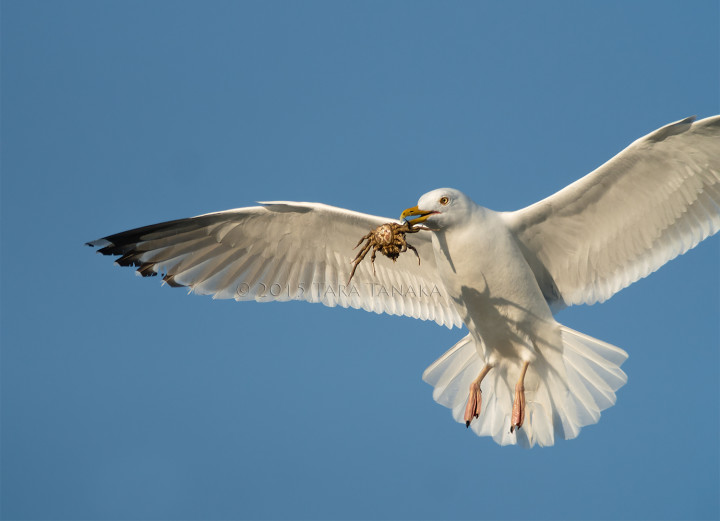
What are the advantages and disadvantages of using a scope as opposed to a long focal length lens?
Price and weight would probably top the list. My scope is waterproof and although I’ve never tested it, I’ve heard of people dropping them with no resulting damage. I believe that with the optics we have today, the results that can be obtained with digiscoping are comparable to those obtained with a lens costing twice as much as my scope.
Although it is possible to digiscope with the camera set on AF, the scope has to be at least close to in focus. Although the few digiscopers I knew of were using AF, very early on I tried setting the camera on manual focus and just focusing the scope, and it’s the way I shoot 100% of the time. I find it a lot simpler – there is no arguing with the camera about what you want to focus on when the bird moves behind a blade of grass – allowing me to put all of my attention on my subject.
Although some people complain about the challenge of achieving accurate focus given the very shallow DOF of digiscoping systems, I find it a tremendous advantage. With video it allows me to move and direct the viewer’s eye around the scene, and with stills I can draw the viewer’s eye right to the eye of the subject, creating that all-important connection.
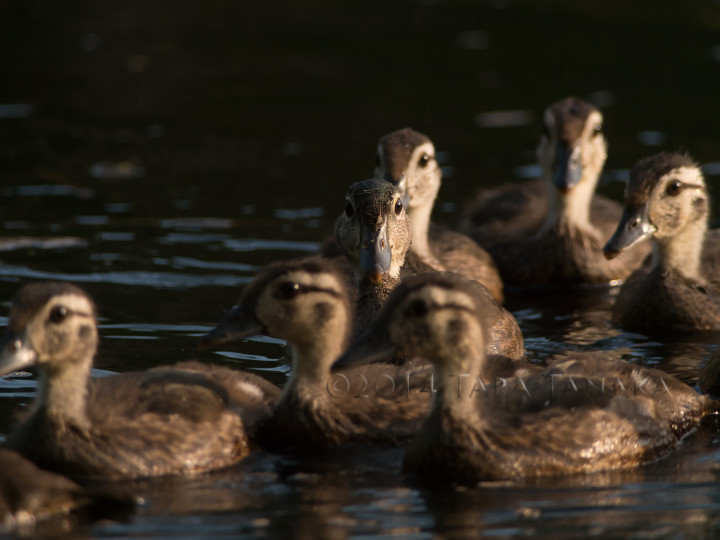
Are there any essential accessories you’d recommend to the budding digiscoper?
Until recently no one was making precision, custom-machined adapters for connecting cameras to virtually any spotting scope eyepiece. There are some proprietary adapters for specific scopes that will accommodate certain cameras, and generic adapters that work with some combinations, but now Paul Sayegh of Digidapter can machine an adapter for virtually any scope’s eyepiece. I have two of them and they’re all I use.
It is worth mentioning that not every camera + lens is compatible with every scope’s eyepiece. It’s important to do some research and confirm that the entire system you’re considering will work together without vignetting before you purchase a scope or camera and then try to find what it will work with.
A set of sturdy tripod legs is critical, and a quality video head will go a long way toward getting good photos and especially video. For video a leveling base for your tripod head is invaluable. I wouldn’t digiscope without a remote shutter release.
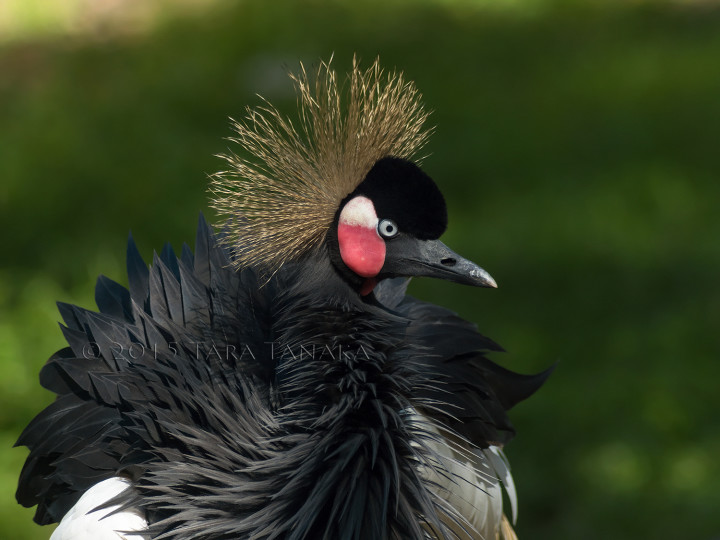
You won the Swarovski’s International Digiscoper of the Year contest in both 2011 and 2012. Can you tell us about the two winning images?
I was at Merritt Island National Wildlife Refuge and saw a group of Roseate Spoonbills preening. Just as the afternoon light dimmed to its most gorgeous warm tones, one of the birds started taking a bath that looked like she was trying to see how much water she could get into the air at one time. Taken with the G1, I used an ISO of 100 with a resulting shutter speed of 1/800s.
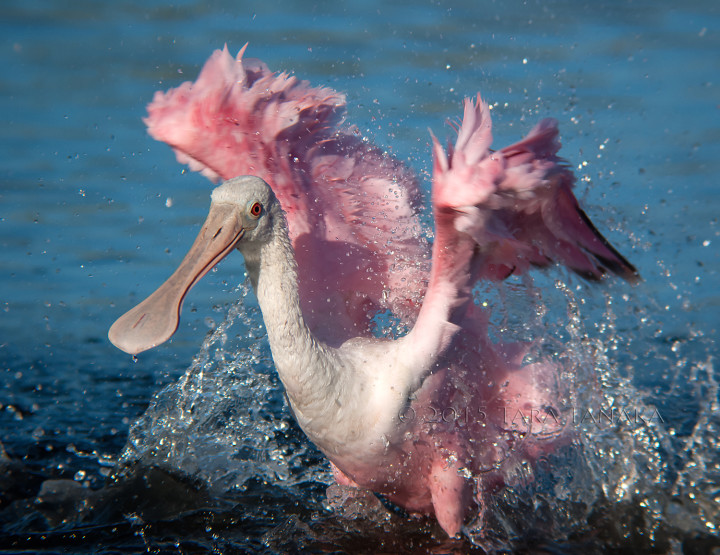
The following year I traveled to a Cattle Egret rookery to see if I could capture what is normally a very plain bird, but that has spectacular breeding colors and feathers for a very brief period each spring. Even their primarily white feathers hold incredible delicate detail. That photo was taken with the GX1 on the Swarovski scope I had won the year before with the Roseate Spoonbill photo.
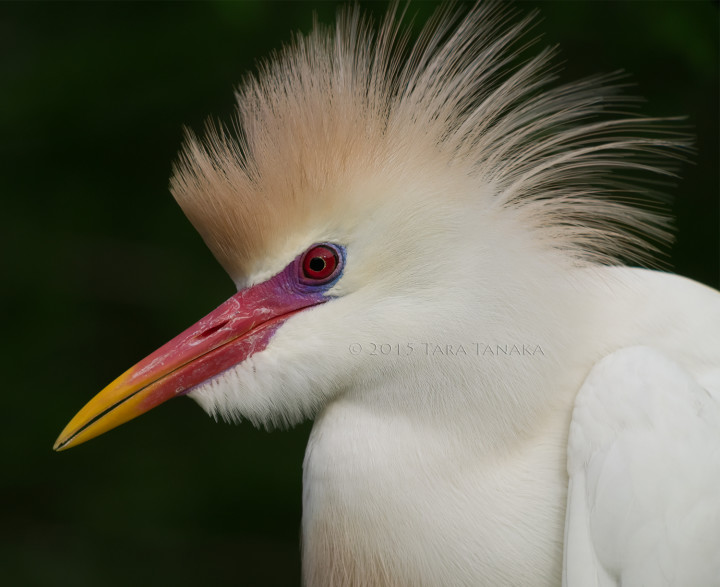
There are many great compact systems out there at the moment. If you hadn’t chosen to go down the Lumix route, would you have chosen another mirrorless system? Which one and why?
When I first won the STX 95, I also received Swarovski’s TLS APO 30mm lens that is made to slip directly onto the STX/ATX eyepieces. Thinking I wanted to use the TLS APO for my digiscoping, I started looking for a mirrorless camera with a lower crop factor than the 2x of the Lumix G cameras, in order to get the equivalent focal length below 1800mm.
It was late 2012 and I rented the Fuji X-E1. It may be different now, but I found that I couldn’t change any settings while it was writing to the card, which meant that if I shot a burst and saw I needed to drop the EV compensation, I couldn’t do that and keep shooting until the camera had completely finished writing to the card, which was a deal-breaker for me when I was trying to capture action that wouldn’t wait. The EV compensation only had a range of +/- 2 which was not enough when I was photographing a big white bird against a dark background, and the “highlight” or “blinkies” function was only available in review mode, so I was not able to get instantaneous feedback on the exposure of the shot I’d just taken. I also rented the Olympus OM-D E-M5 and found the menu system so counter-intuitive that I never took it out of the house. I’ve never tried any of the Sony cameras, but if someone held a gun to my head and told me I couldn’t use my GH4, that is probably where I would start my search.
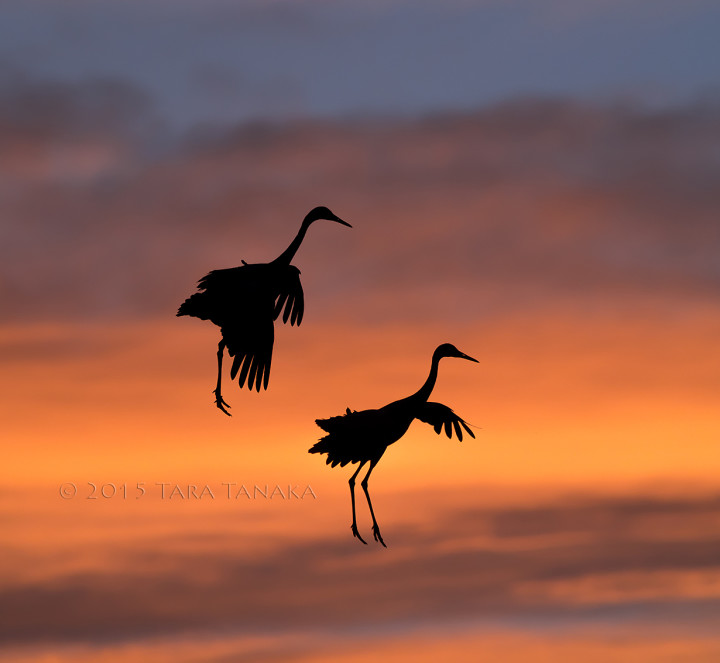
Do you have any questions for Tara about her photography, the Panasonic GH4 or digiscoping in general? If so, be sure to leave her a comment below!
